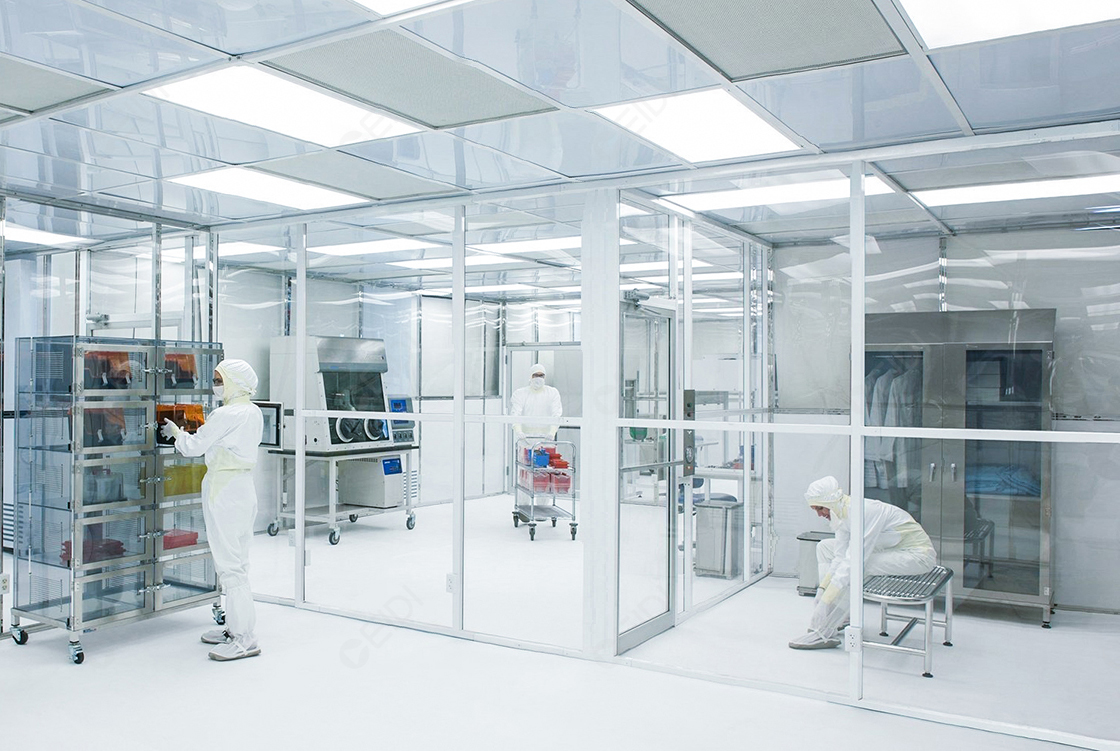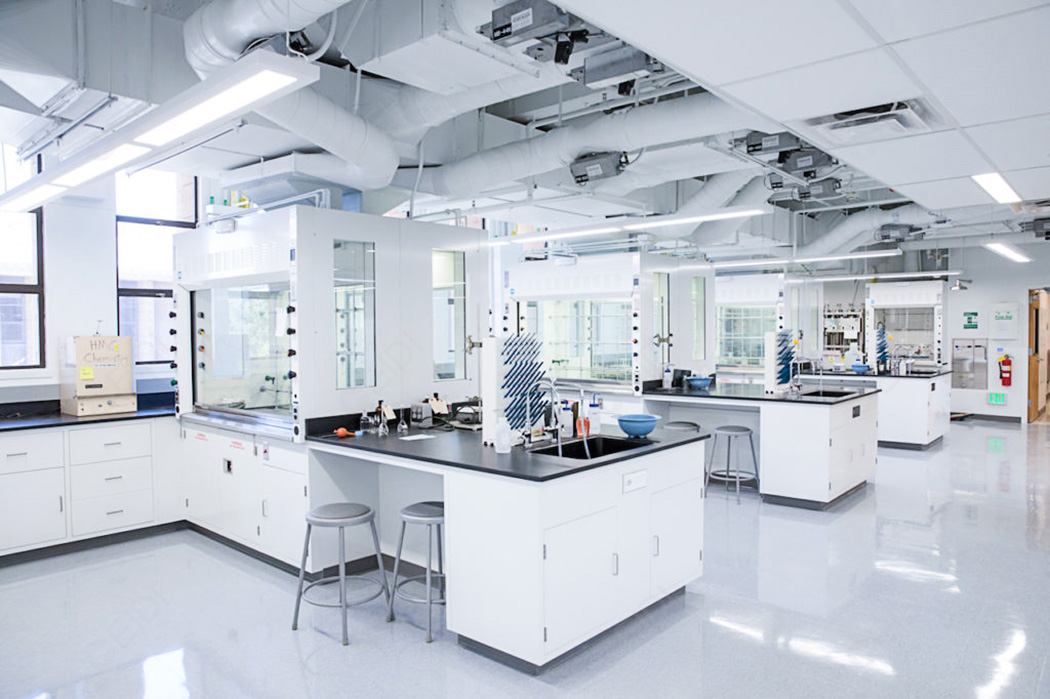Welcome to the official website of Xidi laboratory, the laboratory design and decoration recognize Xidi!
|
|
Home >> News >> Technology
文章出处:Technology|阅读量:800|发表时间:2021-02-25
Microbiology laboratory is mainly used in the fields of microbiology, biomedicine, biochemistry, animal experiment, genetic engineering and biological products, which is different from general laboratory engineering or purification engineering. Usually the microbiology laboratory consists of six parts: preparation room, washing room, sterilization room, sterile room, constant temperature culture room and general laboratory. The common features of these rooms are the smooth and hard texture of the floor and walls, and the simple furnishings of instruments and equipment. In microbiological work, the inoculation and transplantation of bacterial species is a major operation, and the characteristic of this operation is to ensure pure bacterial species and prevent contamination by other bacteria. In the air of the general environment, due to the presence of many dust and bacteria, it is easy to cause pollution and greatly interfere with the inoculation work. The existence of the sterile room plays a very good role in the protection of bacteria and reduces pollution. Therefore, the sterile room is also called the inoculation room, which is a special laboratory for aseptic operat

Clean room working rules:
(1) Sterilization in sterile room. Turn on the ultraviolet light for more than 30 minutes before each use, or spray 5% carbolic acid in the inner and outer chambers 30 minutes before use.
(2) After washing your hands with soap, move the necessary equipment into the outer room; put on sterilized work clothes, work caps and work shoes in the outer room, wear a mask, and then soak your hands with 2% cresol soap for about 2 minutes .
(3) Carry all kinds of needed items into the inner room for inventory and place, spray with 5% carbolic acid on the work surface and the operator's station space, return to the outer room, and then enter the inner room for work after 5-10 minutes.
(4) Before the inoculation operation, wipe your hands with 70% alcohol cotton balls; when performing aseptic operations, the movements should be gentle to minimize air fluctuations and ground dust.
(5) Pay attention to safety during work. If the cotton plug catches fire, hold it tightly with your hands or wrap it with a damp cloth. Do not blow it with your mouth to avoid burning expansion; if the bacteria culture is spilled or the container with bacteria is broken, it should be wrapped with a cloth soaked in 5% carbolic acid , And wipe the countertop or floor with a cloth soaked in 5% carbolic acid, and then continue the operation after wiping your hands with an alcohol cotton ball.
(6) At the end of the work, clean up the countertop immediately, take out all the items and wastes that should not be stored in the sterile room, spray 5% carbolic acid in the sterile room, or irradiate it with ultraviolet light for 30 minutes.
The setting of the sterile room:
From an economic and scientific point of view, the basic requirements for setting up a sterile room are as follows:
(1) The door should be located at the farthest position from the workbench, and a sliding door should be set in the inner room to reduce air fluctuations; the outer door should also be a sliding door, which should be located at the farthest position from the inner room .
(2) The sterile room should have an inner and an outer room, the inner room is a sterile room, and the outer room is a buffer room. The volume of the room should not be too large to facilitate air sterilization. The inner area is 2×2.5=5m2, and the outer area is 1×2=2m2. The height should be less than 2.5m, and there should be a ceiling.
(3) The volume of the sterile room is small and tight. After a period of use, the room temperature is very high, so ventilation windows should be provided. The ventilation window should be set on the ceiling of the entrance door of the inner room (that is, the position farthest from the workbench), preferably a double-layer structure, the outer layer is shutters, and the inner layer can be a sash window. The ventilation window can be opened after use in the inner room and before sterilization to circulate air. Constant temperature and humidity machine can be installed if possible.
(4) A small window should be opened on the wall or "partition fan" that separates the inner and outer rooms for the necessary passage of goods inside and outside during the inoculation process, so as to reduce the number of people entering and leaving the inner room and reduce pollution. The small window is 60cm wide, 40cm high, and 30cm thick, with sashes hanging on the inside and outside
Aseptic room equipment and utensils:
(1) The outer room should have special work clothes, shoes, hats, masks, porcelain basins and towels containing Lysol water, hand-held sprayers and 5% carbolic acid solution, etc.
(2) The interior room should have an alcohol lamp, common vaccination tools, stainless steel knives, scissors, tweezers, 70% alcohol cotton balls, industrial alcohol, glass slides, special crayons, notebooks, pencils, label paper, glue, Waste basket etc.
(3) The workbench in the sterile room, no matter what material or purpose it is, requires a smooth surface and a level surface.
(4) Install an ultraviolet lamp (mostly 30W) in the inner room and the outer room. The ultraviolet lamp in the inner room should be installed directly above the frequently working seat, 2m from the ground, and the ultraviolet lamp in the outer room can be installed in the center of the outer room.
Sterilization of sterile rooms:
(1) Ultraviolet radiation: before each use of the sterile room. Ultraviolet rays have a better sterilization effect. Usually, the ultraviolet light should be turned on for 30 to 60 minutes.
(2) Fumigation: This is a measure of thorough sterilization in the aseptic room. When the sterile room has been used for a long time and the pollution is serious, it should be fumigated and sterilized. It can be fumigated with formaldehyde, lactic acid or sulfur.
(3) Spray: before each use of the sterile room. The spray can promote the sedimentation of particles and microorganisms in the air, prevent the flying field of fine dust on the desktop and the ground, and has a sterilization effect. It can be sprayed with 5% carbolic acid.

CEIDI is a professional integrated service provider specializing in providing integrated services of planning, design, decoration, furniture and supporting engineering for laboratories, clean rooms, animal rooms, and operating rooms. It has a national construction engineering general contracting level three qualification. Level 3 Qualification for Mechanical and Electrical, Level 3 Qualification for Environmental Protection, Level 1 Qualification for Purification, Level 3 Qualification for Steel Structure. It has built benchmark projects for more than a thousand companies, with a cumulative construction area of more than 2 million square meters. The company has always adhered to the mission and responsibility of high standard engineering quality and high-quality customer service. Professionalism, quality, and service are our consistent pursuit.